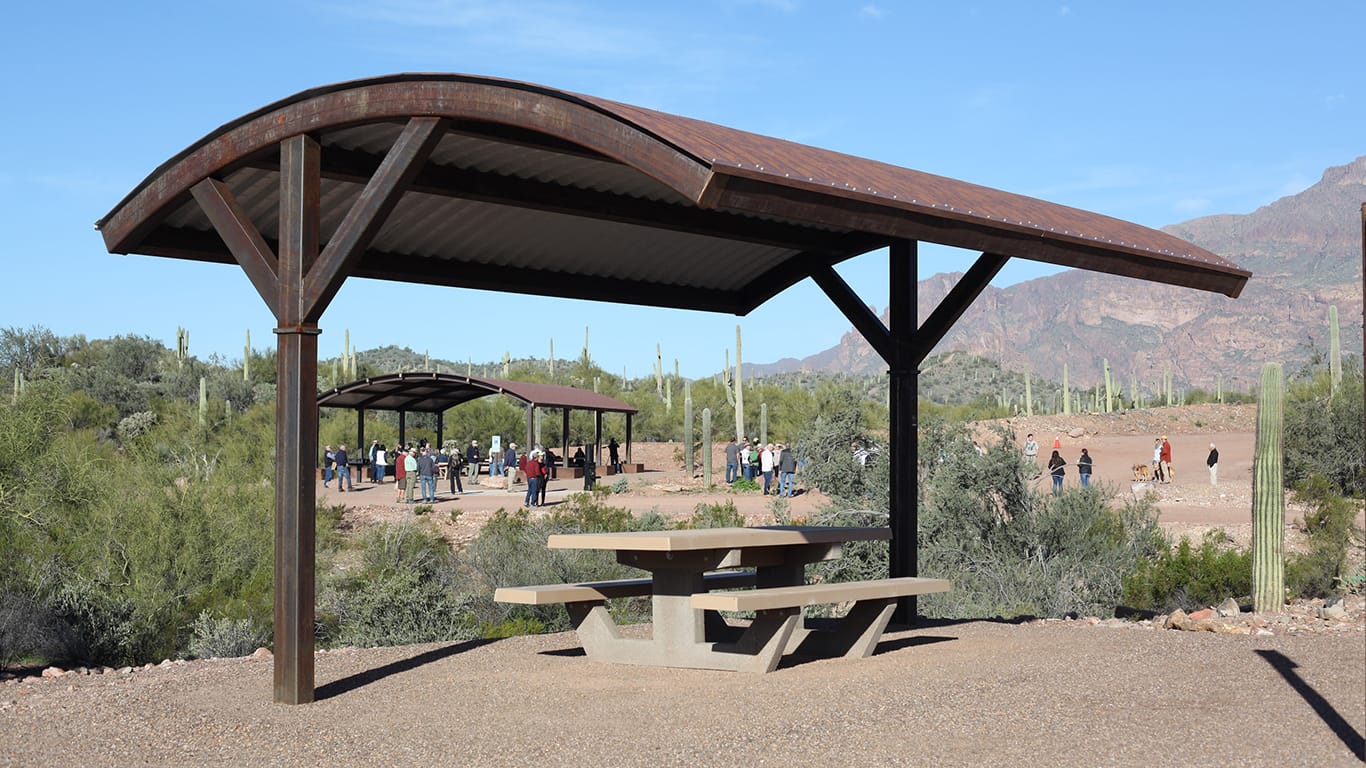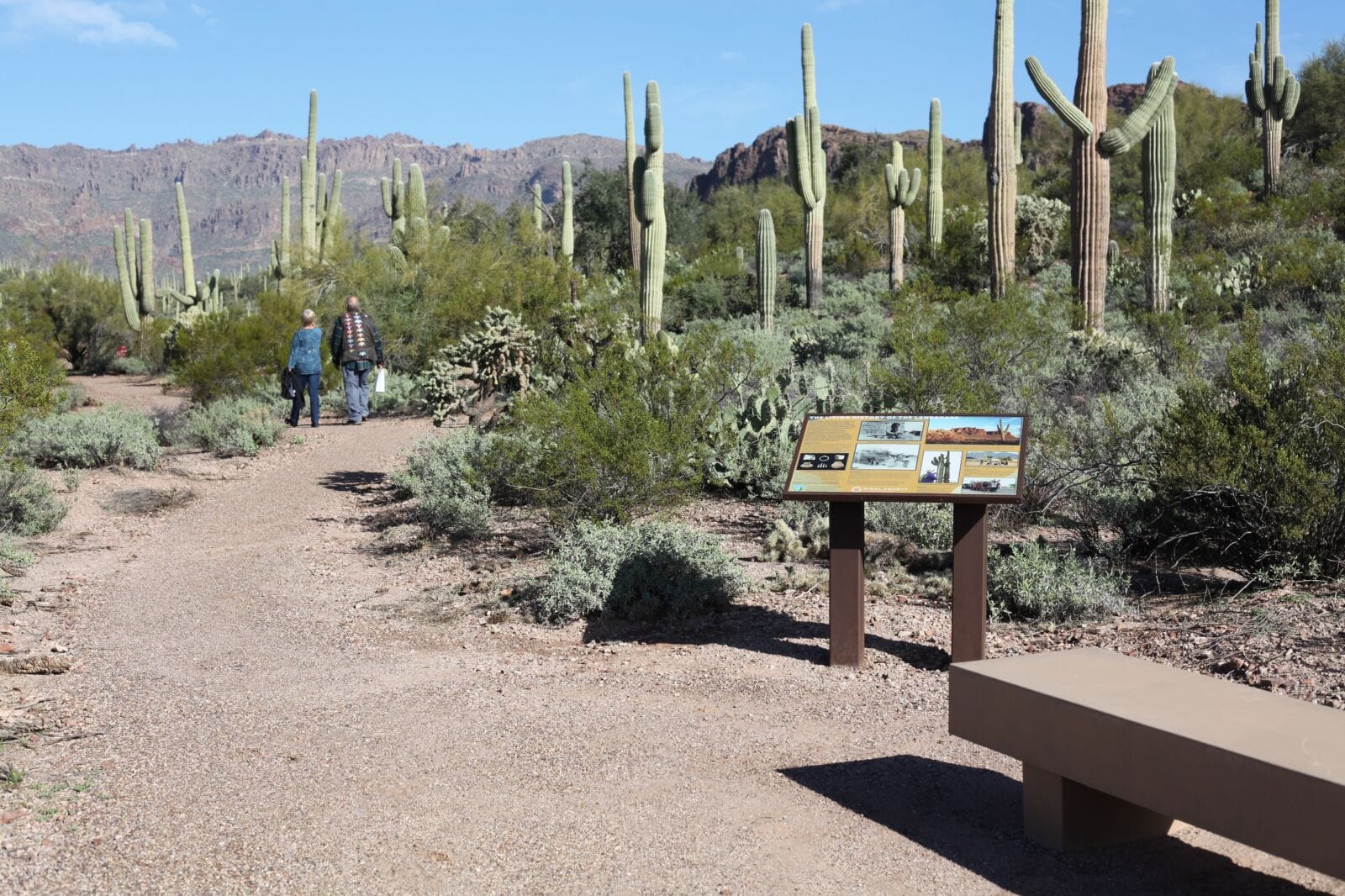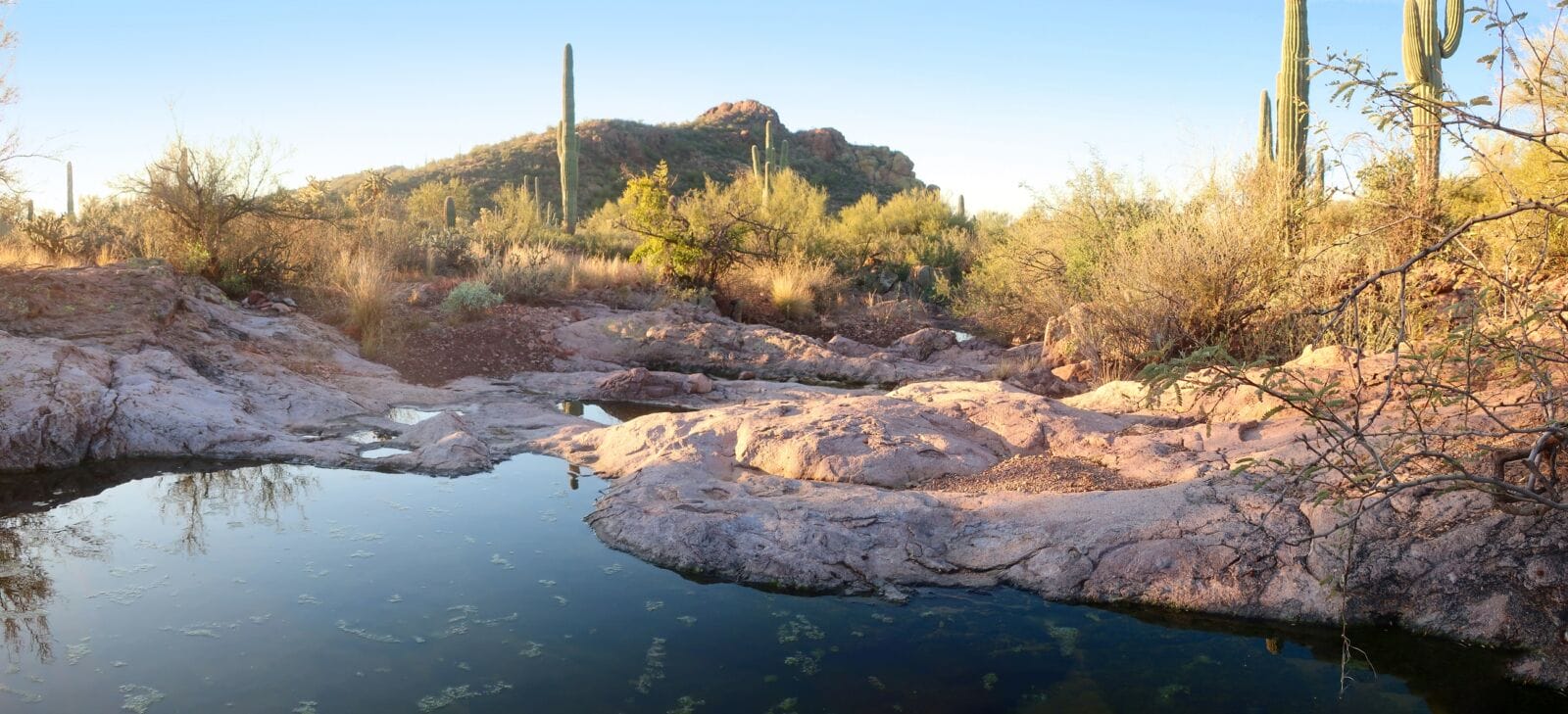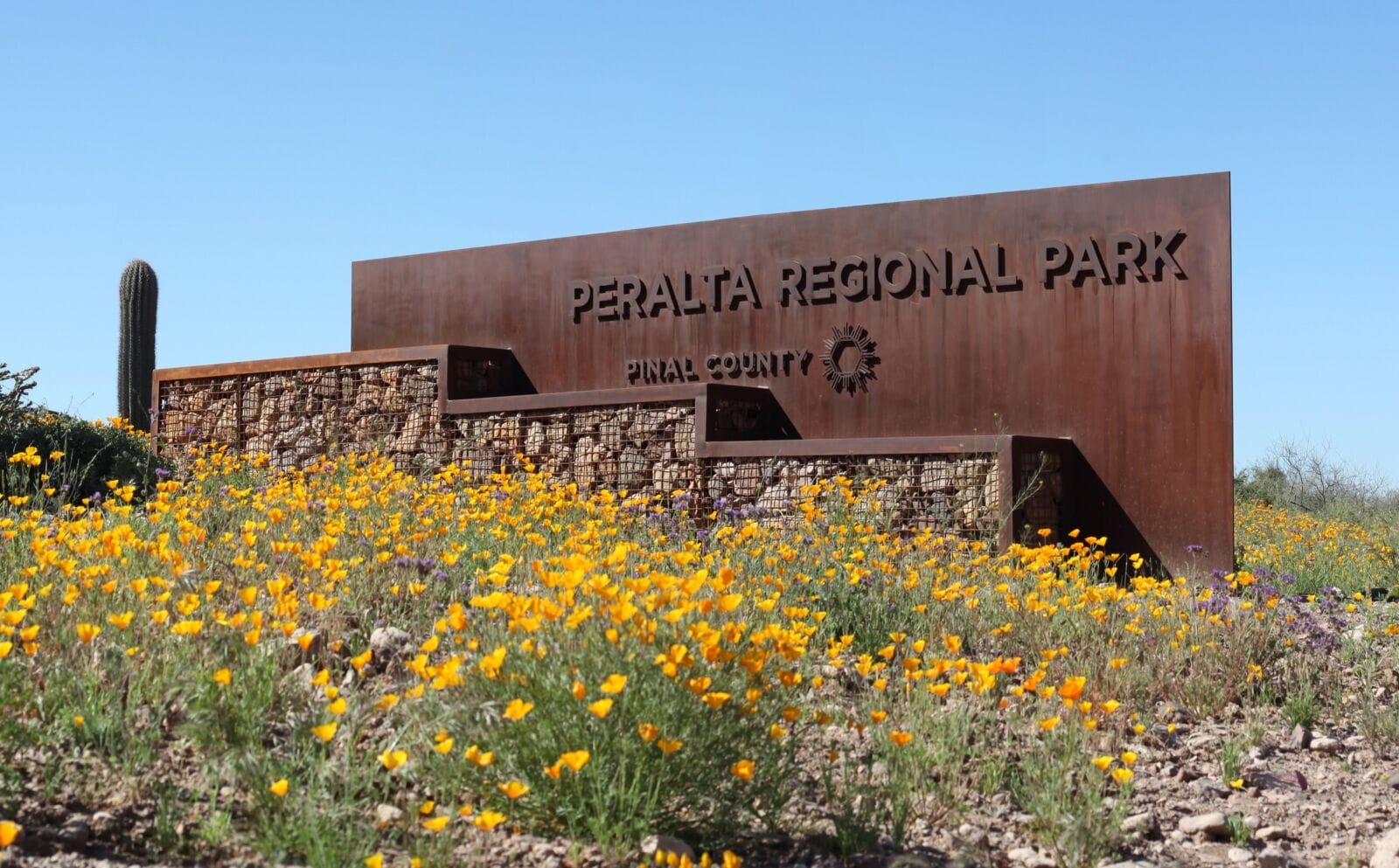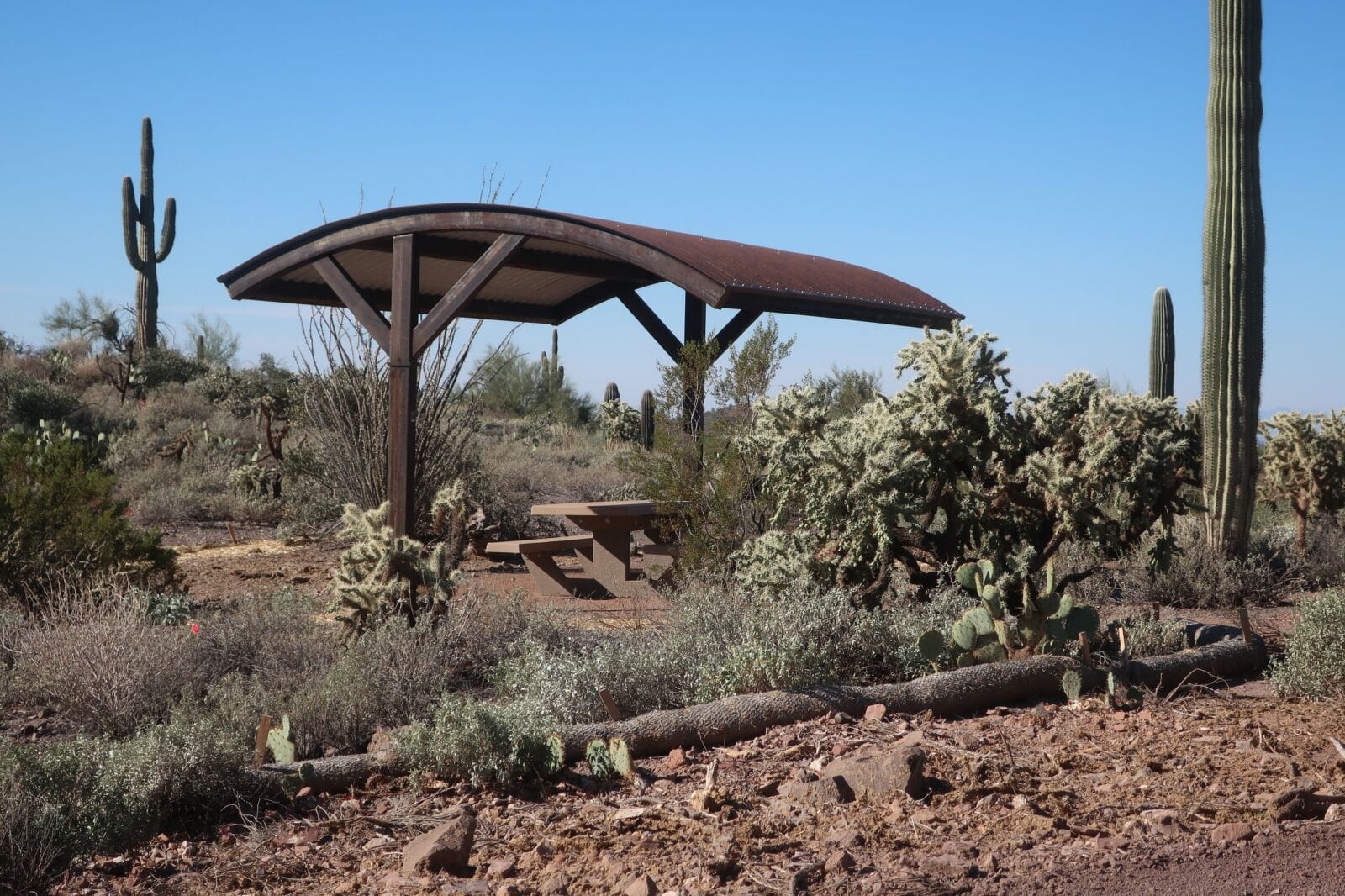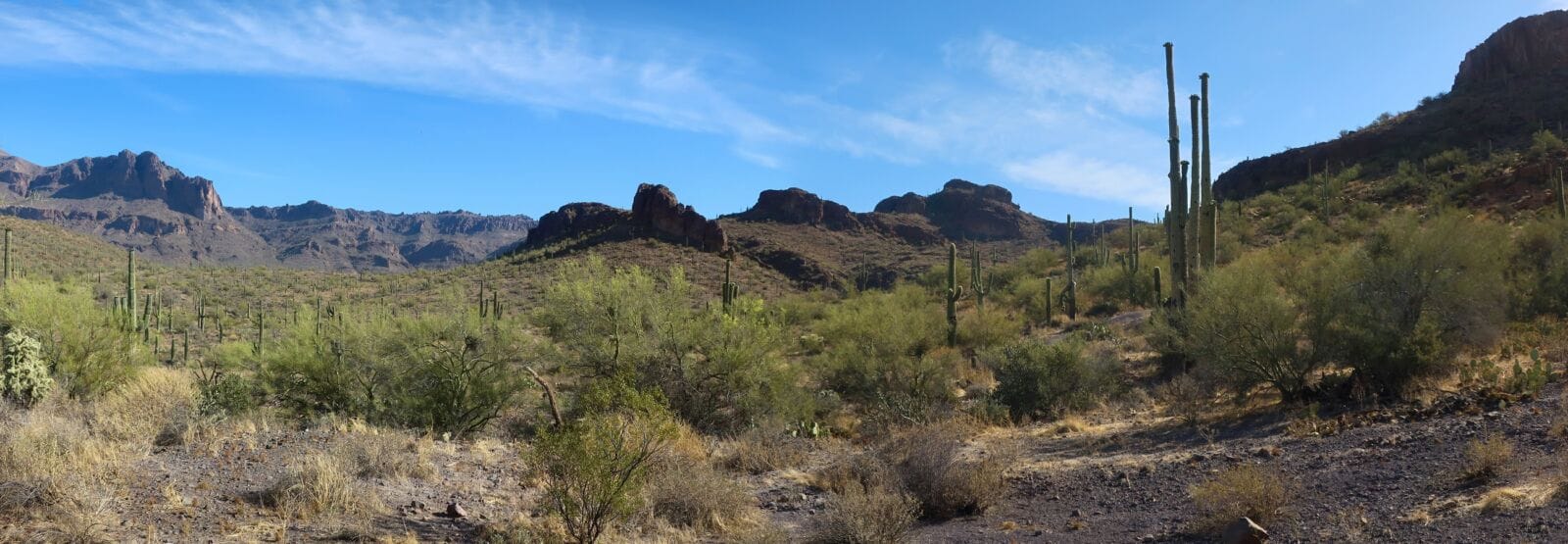Peralta Regional Park rests majestically on almost 500 acres of pristine rolling terrain in the Superstition Mountains of Gold Canyon.
The park opened to great fanfare in January, offering a wide variety of amenities including hiking trails, an equestrian staging area, picnic sites, overnight campsites, an interpretive trail, star gazing, and true to efforts of sustainability, waterless restrooms.
MORE NEWS: Arizona ranks No. 1 as the best state to visit for winter hiking
This summer, Peralta Regional Park won the Arizona Parks and Recreation Association’s (APRA) “Best of the Best 2023” Natural Resources award at the group’s annual conference.
Designing, building, and opening a regional park does not happen overnight. Peralta Regional Park was the culmination of a collaborative effort by numerous stakeholders, including Pinal County Open Space and Trails, the Bureau of Land Management (BLM), Arizona State Parks and Trails, the Superstition Area Land Trust, and the state of Arizona.
“This was an amazing project; I’m eternally grateful for the opportunity,” said Kent Taylor, Director of Pinal County Open Spaces and Trails. “But this was truly a team effort. This includes both internal and external partners, stakeholders, citizens, and team members over the course of an almost 10-year timeline. The park would never have come to completion without all of this tremendous effort and support.”
Terracon Helps Bring Peralta Regional Park to Life
Leading the design team was Karen Snodgrass, LEED AP, Senior Landscape Architect with the Tempe office of Terracon Consultants, a national consulting engineering firm, specializing in environmental, facilities, geotechnical, and materials services.
“We first got involved when Pinal County was working to secure the lease for the site from the BLM through a Recreation and Public Purposes Act (RPPA) lease. We did this by taking the county’s site layout sketch and refining it into a master plan supported by a document describing each of the amenities, the users it would serve, and the criteria governing its design,” Snodgrass said.
“From there, Terracon managed a multidisciplinary subconsultant team led by its landscape architects that included civil, electrical, and structural engineering to develop the construction documents. Terracon also continued to serve through the construction process to review onsite progress.”
The topography of the site, while notably the most powerful draw in terms of scenery, presented the design and construction team with a challenge. In creating the Plan of Development to apply for the RPPA lease, Terracon laid out the intended park facilities using publicly available topography
“When the project advanced to construction documents, we had the site flown by drone for a much higher level of topographic accuracy, which revealed areas that had been oversimplified in the initial data. As a result, the interpretive trail had to be rerouted to maintain accessible slopes and other facilities adjusted to better fit the site. During construction, each picnic site and campsite was staked out, reviewed, and adjusted to minimize grading disturbance and best frame scenic views,” Snodgrass explained.
Working with natural and cultural resources also dominated the design. Several areas onsite were identified for preservation of natural and manmade resources, including an abandoned mine that the Arizona Game and Fish Department designated as an active bat habitat. Some of the preservation areas also required adjusting the location of the main trailhead and the group picnic ramadas
With a water source needed to help sustain the park, the design team took a highly sustainable approach.
“Although the restroom facilities were always designed as waterless vault toilets, the project had intended to include construction of a new well so the park could offer potable water to park users at a couple of yard hydrants (there had been an existing well onsite, but it was no longer viable),” Snodgrass said.
When the RFP for the well drilling work was issued, no drillers bid on the work. According to Snodgrass, this happened during a particularly busy time in the construction industry and most of the drillers were already backlogged with work.
“We instead eliminated supplying water to the public and water is trucked in for use at the host site only. The county may drill a new well in the future, but the facility can continue to exist as a primitive campground without that amenity,” Snodgrass said.
A Regional Park for the People; and a Great Escape
The park’s aesthetic was built on the desire to celebrate both the natural setting and the remnants of rustic construction found onsite using rock, rusted steel, and neutral colors.
The barrel roofs on the picnic ramadas were inspired by the sculptural quality of the rock formations onsite and the cantilevered framing for the roofs reduced the number of support posts needed to better showcase the scenic views.
“It hasn’t taken long for this park to get a fan club and already it has a dedicated group of volunteers and ranger staff. These volunteers are invested in caring for the park so it can continue to delight the public long into the future,” Snodgrass said.
Terracon is working on the design of Palo Verde Regional Park, also in Pinal County. There are components that both projects have in common, but they are also quite different in particular ways. Because the Palo Verde project is in the Arizona Department of Environmental Quality’s non-attainment zone, the roads there will be chip sealed, Snodgrass said.
The campsites at Palo Verde will accommodate RVs with water and electricity hookups, so they will be more like the host site at Peralta without the covered canopy. While the Palo Verde Mountains represent a large area, the county will initially develop a trailhead, campground, and archery range that will be similar in scale in terms of the development footprint to Peralta Regional Park.
The entire team is thrilled Peralta Regional Park received APRA’s Best of the Best 2023 Natural Resources Award.
“It was a tremendous honor. Peralta Regional Park is such a special place to take in the power and beauty of nature. It is absolutely fitting that it be recognized for what it preserved rather than what it constructed. Less than 5 percent of the site was disturbed to construct the park amenities,” Snodgrass said. “So much care was given to laying out and constructing the facilities in a way that laid lightly on land. What was constructed was done so to both provide people access to this natural gem and responsibly manage the impacts of bringing people to it.”
What are Taylor’s favorite amenities at Peralta Regional Park?
“My highlight is how the park was visioned and ultimately designed to showcase the natural beauty, resources, and landscape of the facility. The beauty of the park is the ultimate user amenity,” he said. “We were able to offer low impact outdoor recreation activities that offer users a way to enjoy this beauty such as tent camping, trail use, picnicking, and stargazing.”
“For me personally, it has been my quick getaway from the city when I need a dose of nature. The short drive made it perfect for my family’s spontaneous decision to watch the Orionid meteor shower. It’s an extra treat when we get to invite friends that haven’t been there before,” Snodgrass said.
Peralta Regional Park at a Glance
- Location: 17975 E. Peralta Road, Gold Canyon, Arizona, at U.S. 60 in Gold Canyon, left at the Peralta Road (Forest Road 77) stoplight past mile marker 204. Follow Peralta Road 5 miles to the park entrance.
- Hours: Dawn to 10 p.m., unless otherwise posted (holidays hours apply). The main entry gates are locked at 10 p.m. and reopen at dawn. All overnight guests must check in before the gates close.
- Fees: Day-use visitor fee is $7 per vehicle; overnight camping is $10 per night for all individual sites; group backpack camping sites are $35 per night; and ramada rental is $10 per day and $35 per group ramada per day.
- Amenities: Equestrian staging area, 9+ miles of multi-use non-motorized trails with varying difficulty, 18 picnic sites and two large group picnic sites; stargazing node for setting up a telescope, 31 remote campsites, backpacking campsites, interpretive trail with educational panels, and waterless restrooms.
- Reservations and general information: Visit pinal.gov/1204/Peralta-Regional-Park

